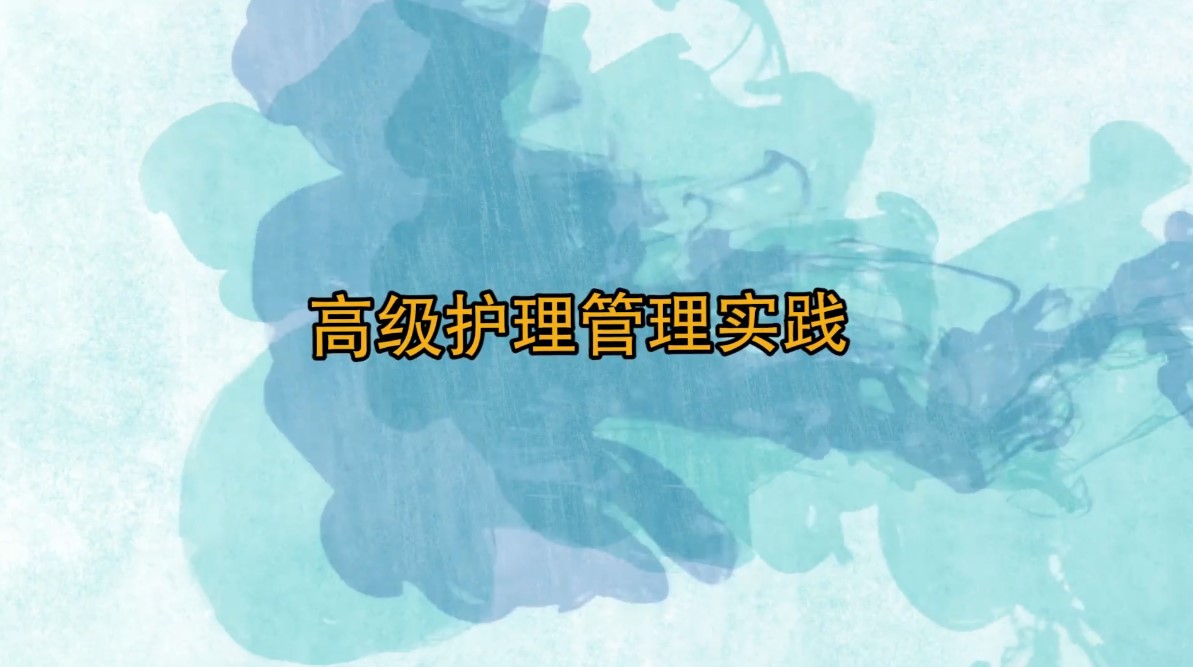
当前课程知识点:老年护理学(Gerontological Nursing) > CHAPTER7 Hospice Care for the Elderly > 7.6 Nursing for Dyspnea in the Dying Elderly > Nursing for Dyspnea in the Dying Elderly
返回《老年护理学(Gerontological Nursing)》慕课在线视频课程列表
返回《老年护理学(Gerontological Nursing)》慕课在线视频列表
同学们好
今天我们要学习的内容是
《临终老年人呼吸困难护理》
实习护士小林在实习日志中记录着
王老在临终前 僵卧在床上
口鼻同时呼吸
有时深吸气
有时呼吸得很快
感觉空气严重不足
要窒息似的
事实上
这就是我们所说的呼吸困难
是临终患者常见的症状
这种呼吸困难会使他们变得非常虚弱
精神状态也濒临奔溃
生命末期
上不来气或者感觉呼吸困难
是很常见的现象
以老年癌症患者为例
据文献统计
约50%~60%的晚期癌症患者
普遍存在呼吸困难
肺癌患者呼吸困难的发生率更是高达74%
这给患者生理和心理上带来了极大的痛苦
严重影响其生活质量
临终前患者的呼吸变得浅而无力
正常人呼吸
比如 3秒一次或4秒一次
很有规律
而临终者的呼吸会变得忽快忽慢
同学们是否听过死亡咆哮声这种说法
在濒临死亡的时候
呼吸时可能会出现杂音
在医学上
这被称作临终喉鸣
或者死亡咆哮声
这是因为随着死亡的临近
喉部的肌肉变得松弛
进而导致液体在此处积聚造成的
这种现象通常出现在生命的最后48个小时
当出现上述症状的时候
我们应该怎么办呢
事实上
没有任何治疗和护理措施
可以从根本上消除这种症状
但有些措施可起到缓解症状的作用
例如改变体位 使用镇静药
负压吸引和湿润口腔等
首先
可以变换患者体位
抬高床头30度
头偏向一侧
可以减少这些声音
使家属感觉老年人不是很痛苦而安心
美国临终关怀和姑息护理协会指出
旁人对这个现象会感到不安
但这些呼吸杂音通常
并不会让临终者本人感到烦躁
其次
可以使用镇静药
当患者呼吸频率>20次每分
可以皮下注射吗啡
通过减慢呼吸频率来减少呼吸杂音
必要时使用镇静药
如咪达唑仑
使老人没有痛苦
吗啡和其他镇静药可能会引起呼吸抑制
使用前需要和家属进行充分沟通
签署同意书后方可使用
再次
可以通过负压吸出分泌物
负压吸引的压力要低
抽吸时间不要超过15秒
以免出现气道粘膜出血和呼吸停止
医护人员应向家属解释
老年人不会因大量分泌物而不适
目前的针对性治疗
可能没有益处甚至有潜在的危害性
以消除家属的顾虑
此外
对张口呼吸者
可采用棉签湿润口腔
或用唇膏湿润嘴唇
老年人睡着时可用湿纱布遮盖口部
避免口腔黏膜干燥 痰痂形成
如果同学们想了解更多先进的临终护理知识
大家可以进入
美国临终关怀和姑息护理协会等机构的网站
查阅相关材料
好
今天我们的课就讲到这里
谢谢
-1.1 Human Life Expectancy and Age Classification of the Elderly
--Human Life Expectancy and Age Classification of the Elderly
--【Vedio Recommendation】 How do we measure life expectancy ?
-1.2 Population Aging
--【Literature Recommendation】World Report on Ageing and Health: 2015
-1.3 Influence and Countermeasures of Population Aging
--Influence and Countermeasures of Population Aging
--【Literature Recommendation】World Population Ageing Highlights:2019
-1.4 Goals and Principles of Elderly Care
--Goals and Principles of Elderly Care
--【Book Recommendation】Evidence-Based Geriatric Nursing Protocols for Best Practice
-1.5 Theories Related to Elderly Care
--1.5.1 Personality Development Theory and Life Review
--1.5.2 Disengagement Theory and Activity Theory
--1.5.3 Self-efficacy and Chronic Disease Management
--【Vedio Recommendation】8 Stages of Development by Erik Erikson
--【Literature Recommendation】Activity Theory, Disengagement Theory, and Successful Aging
--【Book Recommendation】Self-Efficacy in Changing Societies
-1.6 Elderly Support and Elderly Care
--1.6.1 Concepts of Elderly Healthcare, Elderly Support and Elderly Care
--1.6.2 Home-based Elderly Care Model
--1.6.3 Institutional Elderly Care Model
--1.6.4 Integrated Medical and Nursing Care Model
--【Vedio Recommendation】Day in the Life of Home Care
--【Website Recommendation】Official Website of the National Institutes of Health
-Concept Map
--【Concept Map】General Introduction to Geronological Nursing
-【Test】CHAPTER 1
-2.1 Aging Changes in the Elderly
--2.1.1 Aging of the Respiratory System
--2.1.2 Aging of the Cardiovascular System
--2.1.3 Aging of the Digestive System
--2.1.4 Aging of the Urinary System
--2.1.5 Aging of the Endocrine System
--2.1.6 Aging of the Motor System
--2.1.7 Aging of the Nervous System
--2.1.8 Aging of the Sensory System
--【Literature Recommendation】Exercise Attenuates the Major Hallmarks of Aging
--【Book Recommendation】Hazzard's Geriatric Medicine and Gerontology
-2.2 Comprehensive Health Assessment of the Elderly
--Comprehensive Health Assessment of the Elderly
--【Literature Recommendation】Instruments to evaluate mental well-being in old age: a systematic review
-2.3 Principles of Elderly Health Assessment
--Principles of Elderly Health Assessment
-2.4 Assessment of the Functional Status of the Elderly
--Assessment of the Functional Status of the Elderly
--【Literature Recommendation】The Lawton Instrumental Activities of Daily Living (IADL) Scale
-2.5 Assessment of Cognitive Function in the Elderly
--Assessment of Cognitive Function in the Elderly
-2.6 Assessment and Adjustment of the Living Environment for the Elderly
--Assessment and Adjustment of the Living Environment for the Elderly
-Concept Map
--【Concept Map】Elderly Health Assessment(1)
--【Concept Map】Elderly Health Assessment(2)
-【Test】CHAPTER 2
-3.1 Overview of the Psychological Characteristics of the Elderly
--Overview of the Psychological Characteristics of the Elderly
-3.2 Influencing Factors of Psychological Changes in the Elderly
--Influencing Factors of Psychological Changes in the Elderly
-3.3 Common Psychological Issues and Their Management in the Elderly
--3.3.1 Common Psychological Issues and Their Management in the Elderly (1)
--3.3.2 Common Psychological Issues and Their Management in the Elderly (2)
--【Book Recommendation】Development Through the Lifespan
-3.4 Depression in the Elderly
--3.4.1 Overview of Depression in the Elderly
--3.4.2 Clinical Symptoms of Depression in the Elderly
--3.4.3 Caring for Elderly Patients with Depression
--【Documentary Recommendation】Depression:Out of the Shadows
-3.5 Elderly Patients with Dementia
--3.5.1 Identification of Dementia Symptoms in the Elderly
--3.5.2 Intelligence Rehabilitation of Elderly Patients with Dementia
--3.5.3 Safety Care of Elderly Patients with Dementia
--【Website Recommendation】The Global Voice on Demaentia
-Concept Map
--【Concept Map】Elderly Mental Health and Mental Health Care
-【Test】CHAPTER 3
-4.1 Precautions for Daily Care of the Elderly
--Precautions for Daily Care of the Elderly
-4.2 General Care of Elderly Skin
--4.2.1 Characteristics and General Care of Elderly Skin
--4.2.2 Skin Itching and Its Management in the Elderly
--【Website Recommendation】American Academy of Dermatology
-4.3 Clothing Hygiene for the Elderly
--Clothing Hygiene for the Elderly
--【Literature Recommendation】The Design Methods of Functional Clothing for the Elderly
-4.4 Dietary Care for the Elderly
--4.4.1 Nutritional Needs of the Elderly and Influencing Factors of these Needs
--4.4.2 Dietary Care for the Elderly
--【Book Recommendation】Nutrition Care of the Older Adult: a Handbook for Dietetics
--【Website Recommendation】Nutrition for older persons
-4.5 Sleep Guidance for the Elderly
--4.5.1 Sleep Characteristics of the Elderly
--4.5.2 Sleep Guidance for the Elderly
--【Book Recommendation】An Occupational Therapist's Guide to Sleep and Sleep Problems
--【Website Recommendation】American Academy of Sleep Medicine
-4.6 Exercises Guidance for the Elderly
--4.6.1 Evaluation of Exercise Intensity in the Elderly
--4.6.2 Precautions Elderly Undertaking Exercises
--【Website Recommendation】American College of Sport Medicine
--【Book Recommendation】Handbook of Activities for the Elderly
-Concept Map
--【Concept Map】Elderly Daily Care
-【Test】CHAPTER 4
-5.1 Characteristics of Drug Metabolism and Pharmacodynamics in the Elderly
--Characteristics of Drug Metabolism and Pharmacodynamics in the Elderly
--【Website Recommendation】How Drugs Work In the Elderly
-5.2 Common Adverse Drug Reactions and Their Causes in the Elderly
--Common Adverse Drug Reactions and Their Causes in the Elderly
-5.3 The Principles of the Use of Medications in the Elderly
--The Principles of the Use of Medications in the Elderly
-5.4 Prevention of Adverse Drug Reactions in the Elderly
--Prevention of Adverse Drug Reactions in the Elderly
-5.5 Medication Compliance in the Elderly
--Medication Compliance in the Elderly
-Concept Map
--【Concept Map】Medication Safety and Care for the Elderly
-【Test】CHAPTER 5
-6.1 Falls in the Elderly
--6.1.1 Epidemiological Characteristics of Elderly Falls
--6.1.2 Risk Factors for Falls in the Elderly
--6.1.3 Prevention of Falls in the Elderly
--【Website Recommendation】CDC STEADI(Stopping Elderly Accidents, Deaths & Injuries Tool Kit)
-6.2 Dysphagia in the Elderly
-6.3 Urinary Incontinence in the Elderly
--Urinary Incontinence in the Elderly
-6.4 Constipation in the Elderly
-6.5 Dry Mouth in the Elderly
--【Website Recommendation】Academy of Nutrition and Dietetics
-6.6 Elderly Nutritional Deficiencies
--Elderly Nutritional Deficiencies - emaciation
-6.7 Visual Impairment in the Elderly
--Visual Impairment in the Elderly
--【Website Recommendation】Senior Eye Exams
-6.8 Senile Deafness
-6.9 Elderly Delirium
-6.10 Elderly Frailty
--【Literature Recommendation】Frailty in elderly people/Frailty in older people
-6.11 Pneumonia in the Elderly
-6.12 Hypertension in the Elderly
--【Literature Recommendation】2018 Chinese Guidelines for Prevention and Treatment of Hypertension
-6.13 Stroke in the Elderly
-6.14 Stable Angina in the Elderly
--Stable Angina in the Elderly
-Concept Map
--【Concept Map】Nursing Care for the Elderly with Common Health Problems and Diseases
-【Test】CHAPTER 6
-7.1 Concept of Hospice Care
--【Website Recommendation】 Definition of Palliative Care,WHO
-7.2 Death Education
--【Book Recommendation】The Meaning of Death by Herman Feife
-7.3 Nursing for Pain in the Dying Elderly
--Nursing for Pain in the Dying Elderly
-7.4 Nursing for Major Bleeding in the Dying Elderly
--Nursing for Major Bleeding in the Dying Elderly
-7.5 Nursing for Delirium in the Dying Elderly
--Nursing for Delirium in the Dying Elderly
-7.6 Nursing for Dyspnea in the Dying Elderly
--Nursing for Dyspnea in the Dying Elderly
--【Website Recommendation】The Hospice and Palliative Nurses Association,HPNA
-7.7 Psychological Problems and Nursing in the Dying Elderly
--Psychological Problems and Nursing in the Dying Elderly
--【Book Recommendation】On Death and Dying ,by Elisabeth Kübler-Ross
-7.8 Grief Counseling for the Widowed Elderly
--Grief Counseling for the Widowed Elderly
--【Book Recommendation】I Wasn't Ready to Say Goodbye,by Noel·Brook,Blair·Pamela
-Concept Map
--【Concept Map】Hospice Care for the Elderly
-【Test】CHAPTER 7

